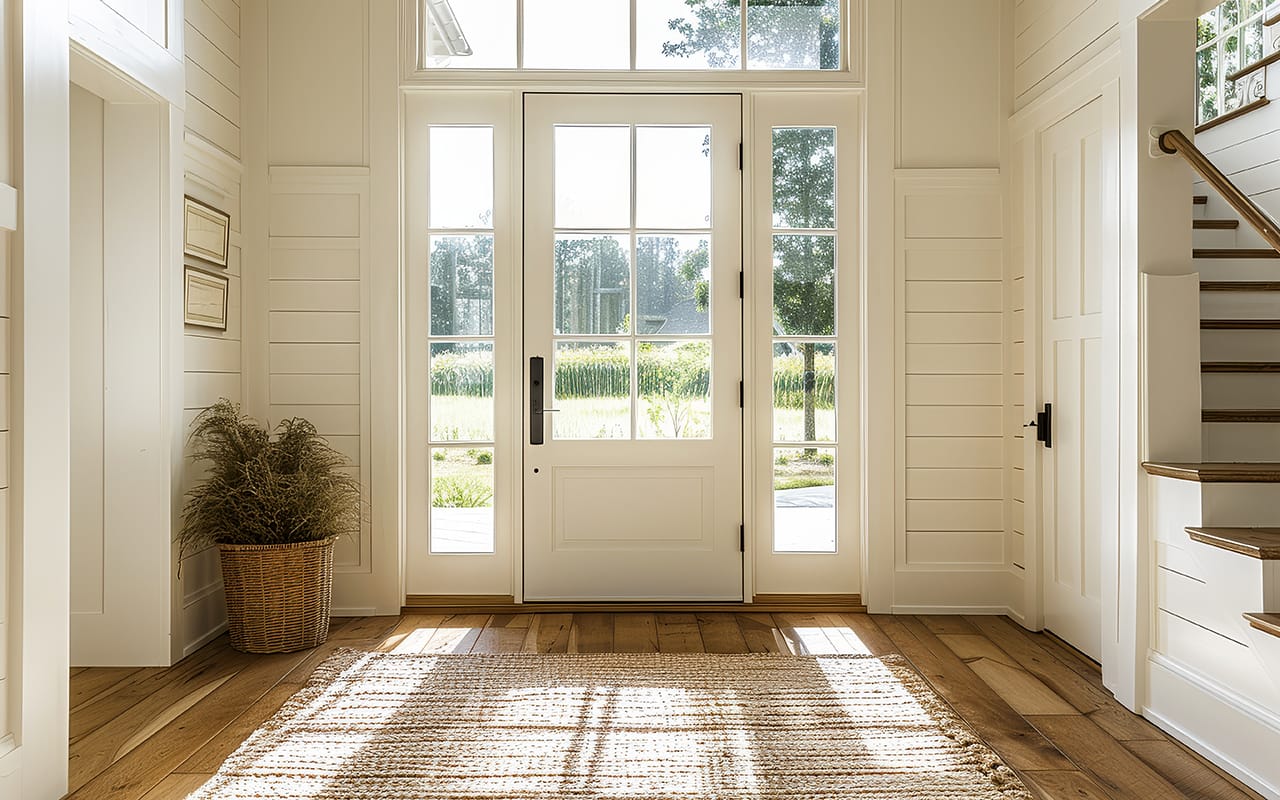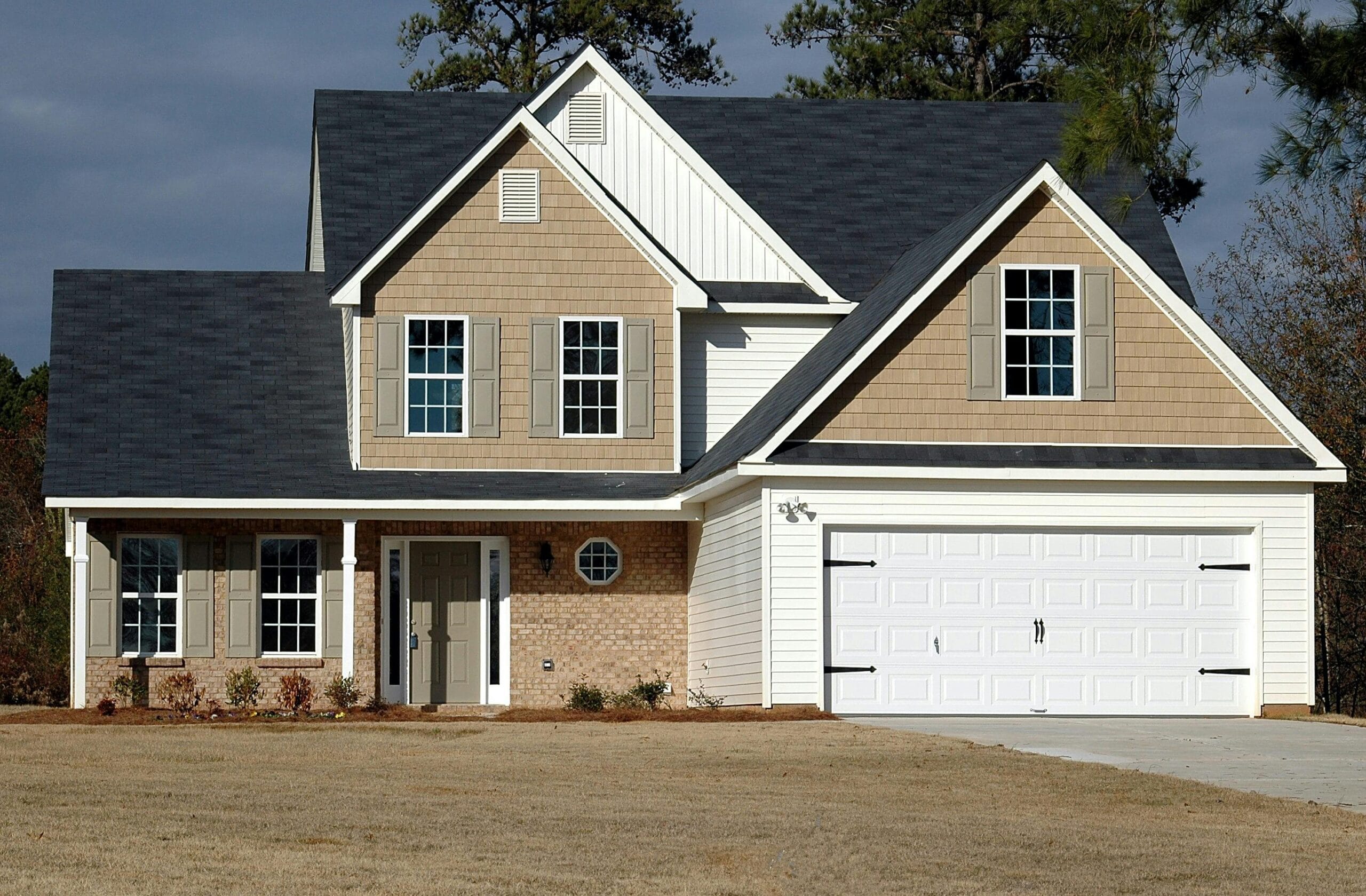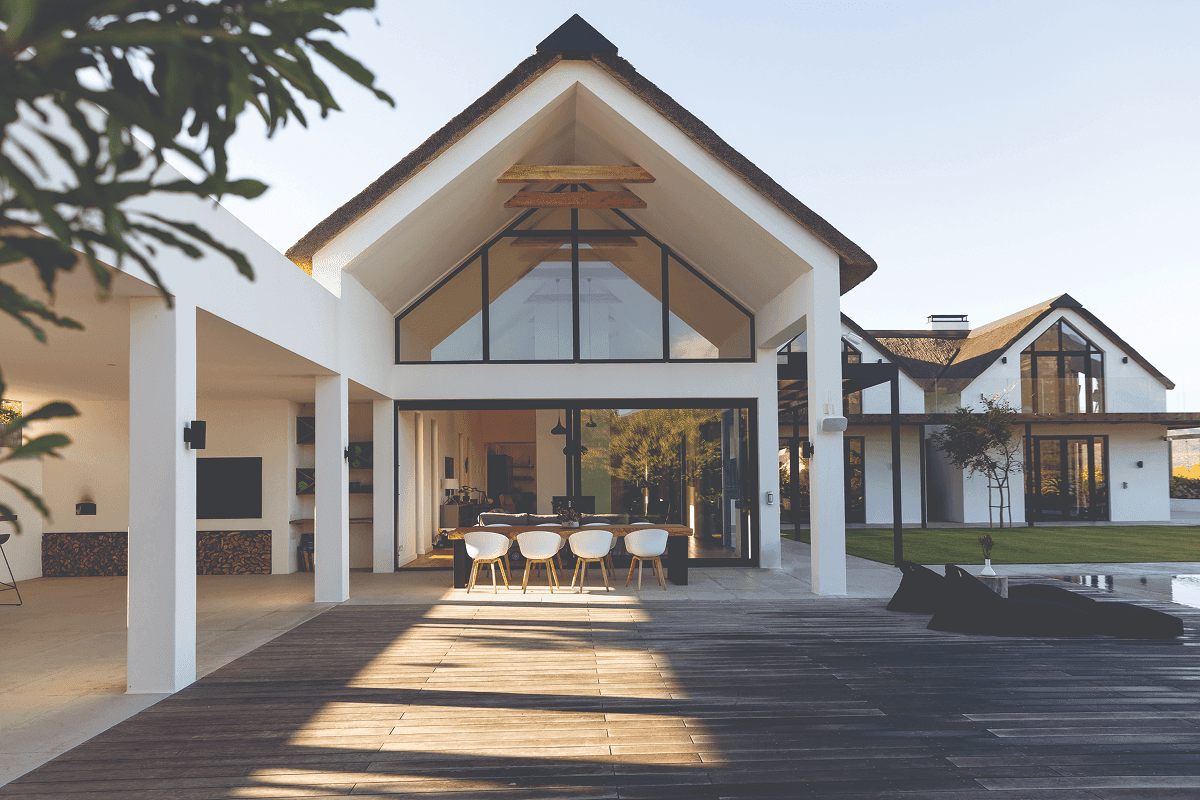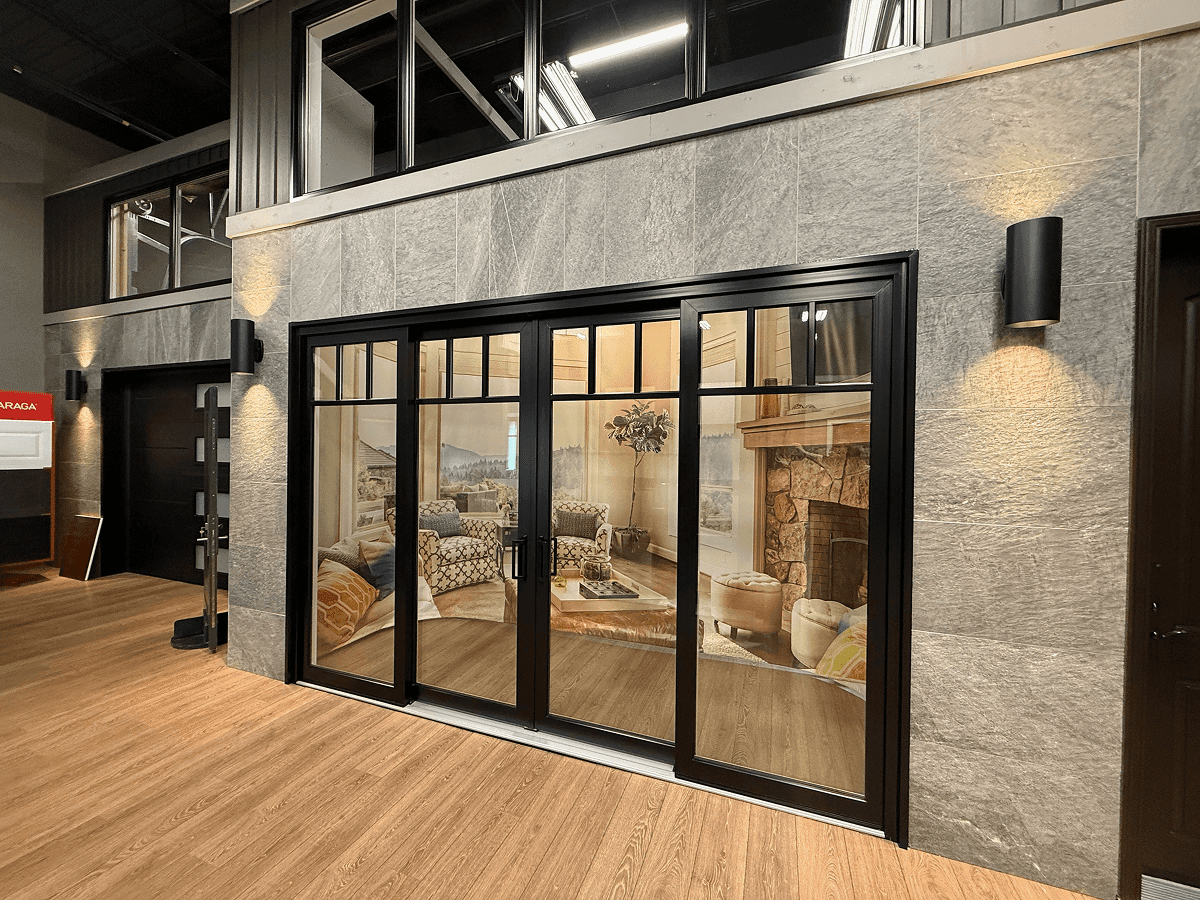When it comes to home improvements, most people focus on big-ticket items like kitchens, flooring, or windows. However, your exterior doors are just as important—and not just for aesthetic reasons. The right door size impacts your home’s safety, comfort, energy efficiency, and accessibility.
Whether you’re upgrading a front entrance, adding French doors to the patio, or installing custom doors for a fresh update, understanding the standard door size in Canada is key to making the right choice. Standard door dimensions provide homeowners and builders with a starting point, making it easier to find replacement doors, match frames, and ensure a smooth installation.
In this comprehensive guide, we’ll cover:
- How accessibility, building codes, and aesthetics influence door size choices,
- Standard sizes for different types of exterior residential doors in Canada,
- When custom door sizes might be the right solution,
- How to measure accurately (and why professional measuring is worth it),
- Installation considerations like door swing direction and handle placement, and
- FAQs on the average door size in Canada.
Factors to Consider When Purchasing a Residential Door
Selecting a door is about more than picking a design you like—size has a significant impact on performance and usability. Before committing to a standard size, think about these key factors:
Accessibility
Accessibility isn’t just for commercial buildings—it’s important in residential homes too, especially as more Canadians plan for aging in place.
A wheelchair-accessible door size is typically at least 36 inches wide. Even if you don’t currently need this, a wider doorway can make a home more adaptable for the future and improve resale appeal.

Building Codes
Building codes in Canada set minimum requirements for door sizes to ensure safety and accessibility. For example, most building codes require the primary exterior door to be at least 32 inches wide when the door is open at 90 degrees. Local codes can vary, so always confirm with your municipality before ordering.
Aesthetics
Proportion matters in design. A door that’s too small for a tall wall can look out of place, while a large door in a compact hallway may feel overwhelming. The right size strikes a balance between function and visual appeal, making the space feel natural and well-planned.
Standard Size for Exterior Doors
Exterior doors do more than welcome guests—they provide security, weather protection, and insulation. In Canada, the most common exterior door size is:
- Height: 80 inches (203.2 cm)
- Width: 32 to 36 inches (81.3 to 91.4 cm)
Many homeowners opt for 36 inches for the ease of moving large items in and out. Some modern builds or custom homes feature oversized exterior doors, measuring 42 inches wide or up to 96 inches tall, which require custom ordering.
Pro Tip: If you’re replacing an older exterior door in a heritage home, be aware that older properties often have slightly different measurements, which may require custom fitting.
Standard Size for Sliding Glass Doors
Sliding glass doors maximize natural light and save space since they don’t swing open.
Common sliding patio door sizes in Canada are:
- Width: 60, 72, or 96 inches (152.4, 182.9, or 243.8 cm)
- Height: 80 inches (203.2 cm)
Larger 96-inch-wide models are ideal for expansive views, but keep in mind they require more structural support.
Standard Size for Garage Doors
Garage doors are sized to fit either one or two vehicles:
- Single-car garage: 8, 9, or 10 feet wide (243.8, 274.3, 304.8 cm), 7 or 8 feet tall (213.4 or 243.8 cm)
- Double-car garage: 16 feet wide (487.7 cm), 7 or 8 feet tall
If you plan to store larger vehicles or recreational equipment, consider adding extra height or width to accommodate them.

When to Consider Custom Door Sizes
Sometimes, the standard just won’t cut it. You might need a custom door size to suit the following requirements:
Unique Architectural Structures
Older or custom-built homes often feature nonstandard door openings. In these cases, a custom size ensures a perfect fit without major structural changes.
Specific Designs
Specialty designs, such as arched tops, extra-wide statement doors, or doors with intricate glasswork, often require custom measurements.
Custom Accessibility
For homes that need to accommodate wheelchairs, walkers, or other mobility aids, a custom width (often 38 inches or more) can make all the difference in day-to-day comfort.
Why Our Measure Technicians Make All the Difference
When you choose Kempenfelt Windows & Doors, you’re not just choosing high-quality products—you’re choosing expertise. While our sales team are experts on all our products, our measure technicians bring the installation knowledge that ensures everything fits perfectly in your home.
Before installation day, a measure technician will visit your home to assess important details such as:
- How your home is framed (2″x4″, 2″x6″, etc.)
- The type of exterior you have (siding, stucco, brick)
- Allowances for insulation and framing around your windows and doors
This careful review means your new windows and doors won’t just look great—they’ll perform exactly as they should. The result? A seamless installation, with custom-made windows and doors that fit your home perfectly.

Behind the Scenes: What We Check
- Maximum size available without compromising insulation
- Optimal window or door depth so trim sits flush with drywall
- Product customization direct from the factory to fit your home precisely
Installation Considerations
Getting the swing direction right prevents awkward layouts and damaged walls. To determine handedness:
- Stand in the doorway with your back to the hinges.
- If the doorknob is on your right, it’s a right-handed door.
- If it’s on your left, it’s left-handed.
FAQs
What is the average door width in Canada?
The average width for a residential door in Canada is 32 to 36 inches. Main entrance doors are typically 36 inches wide for accessibility and ease of moving large items.
How tall are door frames in Canada?
The standard height for most residential door frames in Canada is 80 inches (203.2 cm). Some modern or custom homes may use taller frames, up to 96 inches, for a more dramatic look.
What are the standard exterior and garage door sizes?
- Exterior: 32–36 inches wide, 80 inches tall.
- Garage: 8–10 ft wide (single), 16 ft wide (double).
What is the average door size in Canada?
80 inches tall, 32–36 inches wide.
What is the standard door size for wheelchair access?
To meet accessibility needs, a door should be at least 36 inches wide. This allows enough clearance for most standard wheelchairs. If you’re renovating for accessibility, it’s also a good idea to reduce thresholds and ensure the handle height is easily accessible.
What is the standard size for a double garage door?
In Canada, the most common double garage door size is 16 feet wide and 7 or 8 feet tall. This provides ample space for two vehicles to enter and exit comfortably.
What are standard glass door sizes in Canada?
For exterior glass doors, such as patio or sliding doors, standard widths are 60, 72, or 96 inches, with a standard height of 80 inches. Glass inserts for entry doors are usually designed to fit within the standard 32–36-inch door width.
How do I know if I need a custom door size?
You may need a custom door size if your home has unusual architectural features, an older frame that doesn’t match current standards, or if you’re adding extra width for accessibility. A professional measurement from Kempenfelt can confirm whether a standard size will work.
How do I measure a door size?
Measure width, height, and thickness. For precision, get professional help.

Conclusion About Standard Door Sizes in Canada
Doors may seem simple, but the right size makes a big difference in how your home looks and functions. Whether you stick with standard dimensions or opt for custom, measuring correctly and selecting the right type ensures a perfect fit.
Kempenfelt Windows and Doors can help with free measurements, expert advice, and professional installation, so your next door upgrade is as smooth as it is stylish. Contact us today to arrange for a free, no-obligation consultation!
